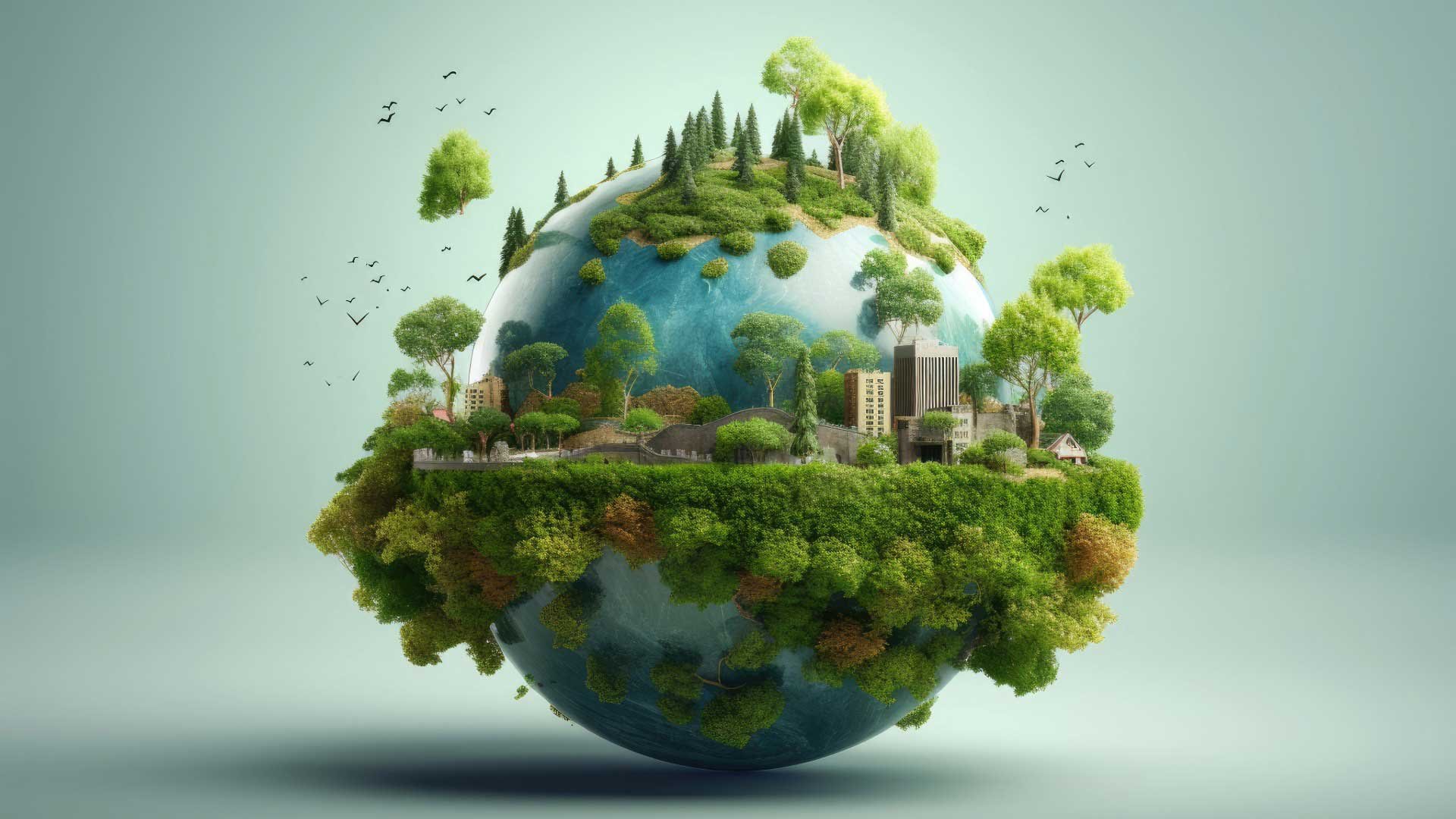World Environment Day 2024: Embracing Land Restoration, Combating Desertification, and Building Drought Resilience

Every year, on June 5th, millions around the globe come together to celebrate World Environment Day.
Established by the United Nations in 1974, this day has grown to be a powerful platform for raising awareness and encouraging action on pressing environmental issues. In 2024, the theme of World Environment Day is "Land Restoration, Desertification, and Drought Resilience," a timely focus that underscores the urgent need to restore degraded land, combat the spread of deserts, and enhance our resilience to drought.
The Urgent Need for Land Restoration
Land degradation is a critical issue affecting over 3.2 billion people worldwide. It refers to the decline in land quality caused by human activities, such as deforestation, overgrazing, and improper agricultural practices. The loss of fertile soil not only diminishes agricultural productivity but also disrupts ecosystems, reduces biodiversity, and contributes to climate change.
The United Nations has identified land restoration as a key solution to reversing these negative trends. Land restoration involves various practices aimed at rehabilitating degraded land to regain its productivity and ecological function. This can include reforestation, sustainable farming practices, and the restoration of wetlands and grasslands.
Restoring land is essential not just for food security, but also for the well-being of the planet. Healthy land absorbs more carbon dioxide, which helps mitigate climate change. It also supports diverse ecosystems, which are vital for maintaining ecological balance and providing resources for human livelihoods.
Desertification: A Growing Threat
Desertification is the process by which fertile land becomes desert as a result of various factors, including prolonged drought, deforestation, and inappropriate agricultural practices. It is a significant global challenge, particularly in regions like Africa, Asia, and Latin America, where vast areas are at risk of turning into barren deserts.
The consequences of desertification are profound. It leads to the loss of arable land, which can exacerbate food insecurity and poverty. Communities dependent on the land for their livelihoods are forced to migrate, often leading to increased urbanization and social tensions. Additionally, desertification can contribute to the loss of biodiversity as plants and animals adapted to more fertile conditions are unable to survive.
To combat desertification, we need to adopt sustainable land management practices. This includes techniques such as agroforestry, where trees and crops are grown together to improve soil fertility and reduce erosion. Other methods include contour farming, which helps retain water and soil, and the use of drought-resistant crops. It is also essential to involve local communities in these efforts, as they are the stewards of the land and have valuable traditional knowledge.
Building Drought Resilience
Droughts are becoming more frequent and severe due to climate change. These prolonged periods of abnormally low rainfall can have devastating effects on agriculture, water supply, and ecosystems. Building drought resilience is crucial to ensuring that communities can withstand and recover from these dry spells.
One approach to enhancing drought resilience is improving water management. This includes techniques such as rainwater harvesting, which involves collecting and storing rainwater for use during dry periods. Efficient irrigation systems, such as drip irrigation, can also help reduce water wastage and ensure crops receive the necessary moisture.
Another key aspect of drought resilience is the restoration of degraded land. Healthy soils have better water-holding capacity and can support more robust plant growth, which in turn helps maintain the local water cycle. Additionally, planting drought-resistant crops and improving crop diversity can provide a buffer against the impacts of drought.
Global Initiatives and Success Stories
Around the world, numerous initiatives and success stories demonstrate the potential of land restoration, desertification control, and drought resilience. In Africa, the Great Green Wall initiative aims to create a mosaic of green and productive landscapes across the Sahel region. This ambitious project involves planting trees and implementing sustainable land management practices to restore degraded land and combat desertification.
In China, the Loess Plateau Watershed Rehabilitation Project has transformed one of the most degraded regions in the country. Through terracing, reforestation, and improved agricultural practices, the project has restored the landscape, improved food security, and increased farmers' incomes.
India's efforts in rainwater harvesting, particularly in the state of Rajasthan, have also shown remarkable results. By constructing traditional water storage systems known as johads, communities have managed to replenish groundwater levels, support agriculture, and enhance their resilience to drought.
These examples highlight the importance of collaboration between governments, non-governmental organizations, local communities, and international agencies. By working together, we can scale up these successful practices and implement them in other regions facing similar challenges.
The Role of Individuals and Communities
While large-scale initiatives are crucial, individual and community actions also play a vital role in achieving the goals of land restoration, desertification control, and drought resilience. Simple actions such as planting trees, conserving water, and adopting sustainable farming practices can have a significant impact when carried out collectively.
Education and awareness are also critical. By understanding the importance of healthy land and the threats posed by desertification and drought, individuals can make informed choices and advocate for policies that support sustainable land management. Schools, community groups, and media outlets can all contribute to spreading this knowledge and inspiring action.
Looking Ahead
World Environment Day 2024 provides an opportunity to reflect on the progress made and the challenges that lie ahead in the fight against land degradation, desertification, and drought. It is a call to action for governments, organizations, and individuals to commit to sustainable practices that protect our land and ensure a resilient future.
The theme of land restoration, desertification, and drought resilience is not just about preserving the environment; it is about securing the foundation of our societies and economies. Healthy land is essential for food production, water supply, and biodiversity. By restoring degraded land, combating desertification, and building drought resilience, we can create a sustainable and prosperous future for all.
As we celebrate World Environment Day 2024, let us renew our commitment to protecting and restoring our planet's land. Let us embrace the challenge of creating a world where fertile soils, thriving ecosystems, and resilient communities are the norm. Together, we can turn the tide on land degradation, desertification, and drought, and pave the way for a healthier and more sustainable future.

Pande Nabende
Related content
Interdum et malesuada fames



